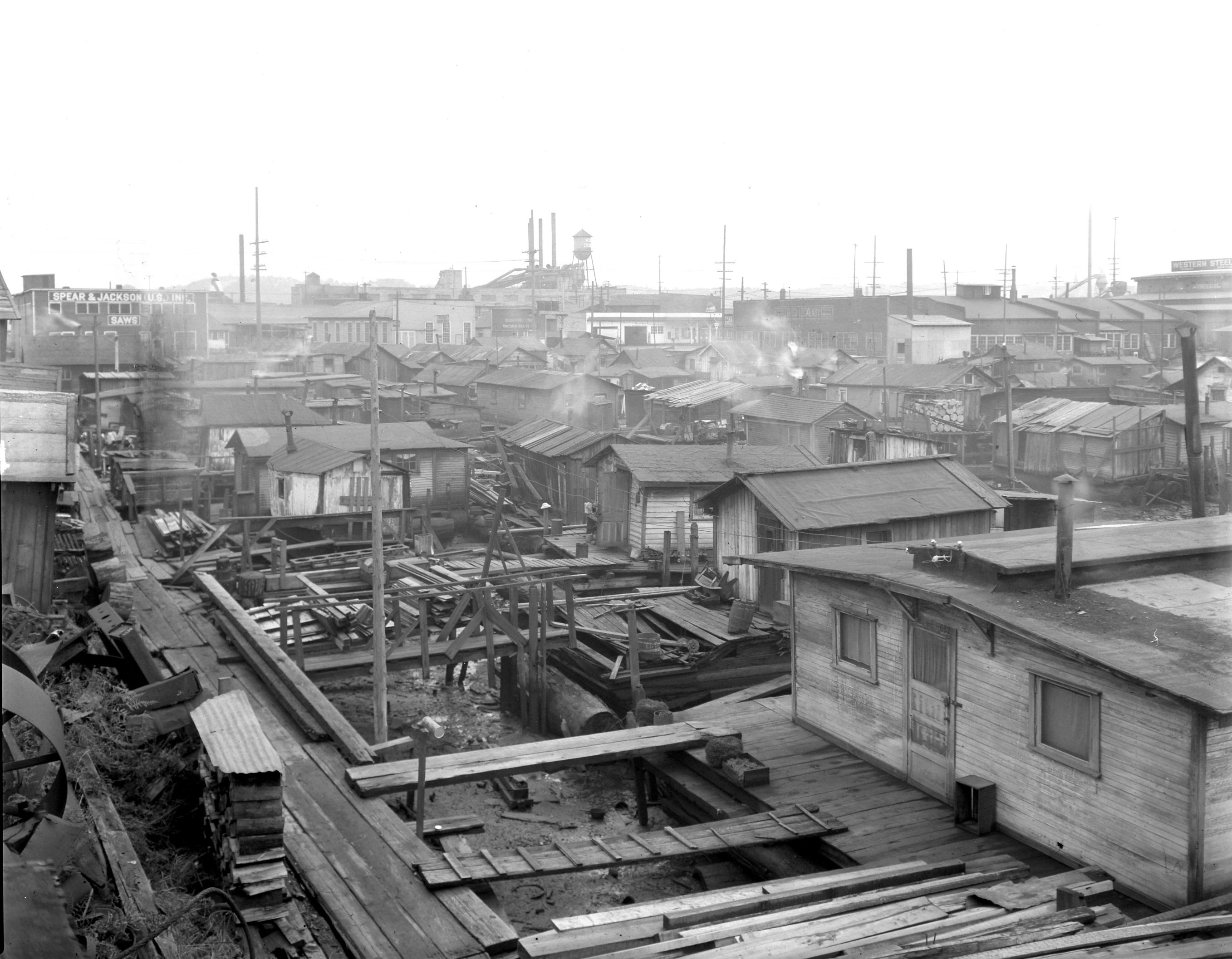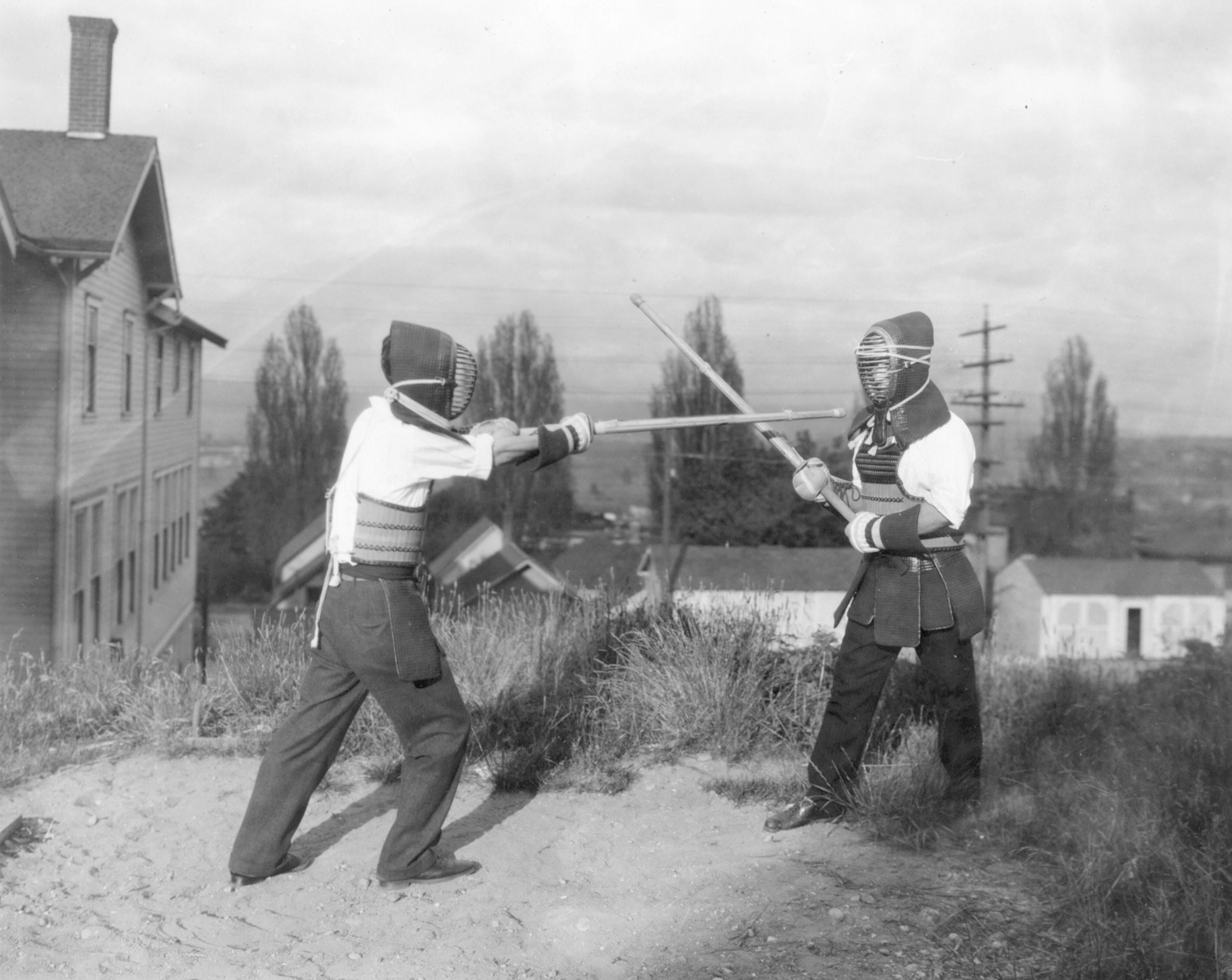The Tideflats
While the City of Tacoma has had a Tideflats Subarea Project, to one day utilize the area for affordable housing and creating recreational spaces, in development since 20131, the land was still eerily undeveloped and unpopulated when I first visited in 2022.
Walking to the Detention Center from my previous residence just outside of downtown, I only encountered a single person walking in the Tideflats. Aside from a burger and teriyaki restaurant for truckers, and a community living on the north shore of the tideflats in cars and trailers there’s very little signs of life. The vast majority of buildings are sprawling, one or two story warehouses, creating expansive sight lines and lack of tree cover which has a creeping, agoraphobic effect. This all makes it difficult to comprehend how this area was once a community.
✺

Exploring the Northwest Room archives, I found an interview with someone named Mabel Bunge within the Bicentennial Oral History Project conducted in the 1970s. The daughter of Scandinavians, Bunge’s father decided to move from the Tacoma mainland to the Puyallup River side of the Tideflats, where they lived on a simple houseboat.2 She attended the Garfield School, created by the St. Paul and Tacoma Lumber Co. in 1891 to teach the children of their mill workers, but open to all of the youth in the area.3
In addition to Nordic fishing settlements, the Tideflats also sustained a Japanese American community. In Lisa Hoffman and Mary Hanneman’s excellent Re-Mapping Tacoma’s Pre-War Japantown, the authors painstakingly reconstruct communities using an array of different oral history accounts from former residents. According to the 1910 census, there were at least 13,000 Japanese American immigrants living in Washington and some 2,500 of those residents were employed in Pacific Northwest sawmills.

The St. Paul and Tacoma Lumber Company incentivized immigrant labor due to the dangerous work conditions and insatiable demand for building materials during this period. The company provided newly arrived, unskilled workers with schools, boarding houses and customized cultural amenities on the Tideflats, essentially creating a company town just south of Tacoma’s urban center. The St. Paul and Tacoma Hotel had two buildings for housing employees, one for European workers and a Japanese Hotel on the opposite end of St. Paul avenue. Interviewee Clinton Butsuda described the building as
✺
“A dark red and white trimmed two story… boarding house with about 40 rooms for the bachelors,” and described “men engaged in Judo and fencing kendo with pads, masks, and bamboo swords on holidays and… weekends.”
Tideflats resident J.L. Sundquist recalled that after the Garfield school was shut down, he and his Japanese American schoolmates took a dark green streetcar with rattan seats that clattered up the 11th street bridge up to the Central School, located just north of where the main library is now. What Sundquist doesn’t mention is that the Garfield School was forced to close due to the “stench from a packing house in the vicinity.” 5
✺
-
“Tideflats Subarea Plan - City of Tacoma.” n.d. Accessed March 28, 2024. https://www.cityoftacoma.org/government/city_departments/planning_and_development_services/planning_services/current_initiatives_and_projects/tideflats_subarea_plan. ↩
-
“Fife, the Highway and Business: Mabel Bunge (Interview No. 51, Tape No. 1) - Northwest ORCA.” n.d. Accessed April 1, 2024. https://northwestroom.tacomalibrary.org/index.php/fife-the-highway-and-business-mabel-bunge-interview-no-51-tape-no-1. ↩
-
“1834 SAINT PAUL AVE, TACOMA.” 2022. July 28, 2022. https://tacomalibrary.contentdm.oclc.org/digital/collection/p17061coll1/id/86683/. ↩
-
Hoffman, Lisa, Mary Hanneman, and Sarah Pyle. n.d. “Re-Mapping Tacoma’s Pre-War Japantown: Living on the Tideflats,” 30. ↩
-
The Tacoma Daily News. Thursday, October 5, 1905. ↩